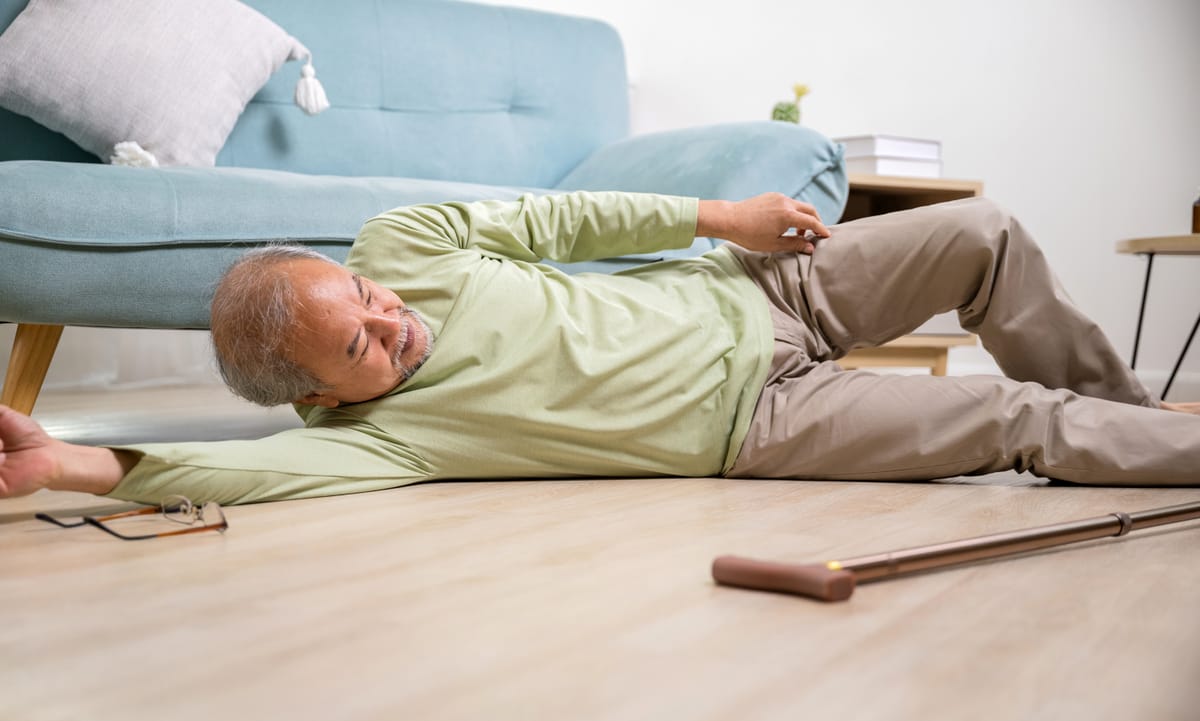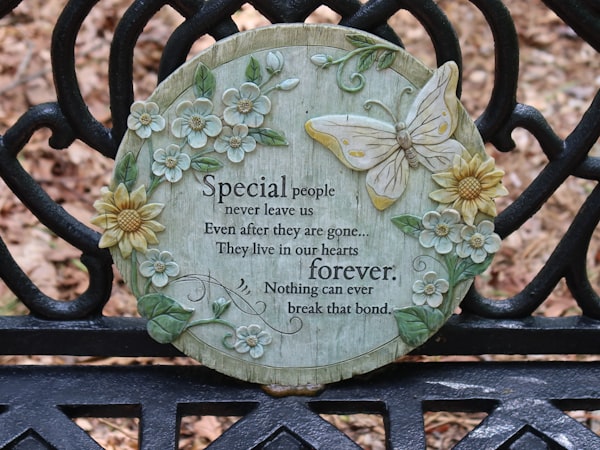Do Chair Alarms for Elderly Prevent Falls?
Do chair alarms for the elderly truly prevent falls or just provide a false sense of security? Discover the pros and cons of using chair alarms for fall prevention.

Falls are a leading cause of injury and disability among the elderly. For this reason, bed and chair alarms have been developed to help prevent falls. Bed and chair alarms are devices designed to alert caregivers when an elderly person is getting up from their bed or chair. Some bed and chair alarms come with an adjustable volume feature, allowing customization of alert sounds based on individual needs. In this guide, we will look at how bed and chair alarms can be used to prevent falls in elderly people and what types of alarms are available. We will discuss the benefits and risks associated with using these alarms, as well as provide tips on choosing the right alarm and compare prices.

What Are Bed and Chair Alarms and How Do They Work?
Bed and chair alarms are devices that are used to help reduce the risk of falls among elderly patients and those with restricted mobility. These alarms are typically placed underneath a person’s mattress or chair cushion and, when triggered, make an audible sound to alert the patient and any nearby caregivers. These devices will trigger alarm sounds when weight is removed from the bed pad or chair pad, ensuring caregivers are immediately notified. They are designed to prevent falls before they happen and provide an additional layer of protection for vulnerable individuals.
Most bed and chair alarms are powered by either batteries or electricity and can be set up in a matter of minutes. Some systems feature alarm monitors that will alert a caregiver when the alarm is activated, while others require the caregiver to remain within hearing range of the alarm. Some alarms also feature bed sensor pads that will detect when a person is getting out of bed or chair and will trigger the alarm before they have a chance to fall. These bed alarms alert caregivers immediately when pressure is removed from the sensor pad, ensuring timely responses to prevent falls and wandering.
Benefits of Bed and Chair Alarms
Bed and chair alarms can be beneficial for those at risk of falling out of bed or out of a chair, such as elderly individuals or those with balance issues. These alarms are designed to alert caregivers when someone is getting up or attempting to get out of bed or a chair.
Here are a few ways that bed and chair alarms can help:
- Reduce potential injuries from falls
- Provide an extra layer of security for vulnerable individuals
- Help caregivers provide better care for their loved ones
- Provide peace of mind for both caregivers and those being cared for
In addition to helping prevent falls, bed and chair alarms can also provide additional assistance with transfers, toileting, and mobility for those who need it.
Types of Bed and Chair Alarms
Bed and chair alarms are designed to alert caregivers when someone has gotten up or moved from a seated position. There are several different types of alarms, each with their own advantages and disadvantages.
The most common type is a pressure pad alarm, which is usually placed underneath the bedsheet or mattress, or under the person sitting on the chair. When there is movement or weight displacement, the alarm is triggered. Pressure pad alarms can be used in both beds and chairs, but they are typically more expensive than other types of alarms. Bed alarms are essential devices designed to monitor a patient's movements while they are in bed, detecting when a patient attempts to leave the bed and alerting caregivers to prevent falls.
A second type of alarm is a chair sensor pad. This type of alarm is placed anywhere where pressure can be detected, such as the floor or base of the chair. It can be set to detect subtle movements or large shifts in weight, like when someone stands up. Sensor pad alarms are typically less expensive than pressure pad alarms, but they are generally more difficult to install. Corded alarms are a cost-effective solution designed for seniors, featuring a magnetic pull mechanism that prevents accidental disconnections and multi-level volume and alert options.
The third type of alarm is a motion detector alarm. This type of alarm is placed above the person sitting or laying down, and it monitors for any sudden or unexpected movements. Motion detector alarms can be helpful for people who often move around too much in bed or in their chairs, but they are usually more expensive than other types of alarms. Floor mat sensors, such as a wireless 24" x 36" floor mat sensor, work in conjunction with caregiver pagers to alert caregivers about patient movements, enhancing safety within healthcare settings.
When Is It Beneficial to Use a Bed or Chair Alarm?
Bed and chair alarms are most beneficial for individuals at risk of falls, such as people with dementia or cognitive impairments. Bed alarms, in particular, are essential devices designed to monitor a patient's movements while they are in bed. They detect when a patient attempts to leave the bed and alert caregivers to prevent falls, making them crucial in both hospital and home environments. Bed and chair alarms are essential tools in elderly fall prevention, helping caregivers manage and prevent falls among elderly individuals. Bed and chair alarms are also useful when leaving someone alone in a chair or bed, as they provide an extra layer of safety. In addition, they can be beneficial for individuals who may be prone to getting out of bed or chair suddenly and unassisted. Finally, bed and chair alarms can be beneficial for individuals who experience seizures, as they provide a way to alert family or caregivers of a fall.

Risks and Downsides of Bed and Chair Alarms
Bed and chair alarms are designed to help reduce the risk of falls, but they can also have risks and downsides. It’s important to be aware of these before making a decision about whether or not to use one.
One of the main risks associated with bed and chair alarms is that they may not always detect the person leaving the bed or chair in time to prevent a fall. Bed alarms, in particular, are designed to monitor a patient's movements while they are in bed, but they may not always be effective in alerting caregivers promptly.
Another risk is that some bed and chair alarms can be triggered by movements other than those from the person using the alarm. For example, if the bed or chair is bumped or rocked, the alarm may be triggered inadvertently. This can lead to false alarms and unnecessary noise.
In addition, some bed and chair alarms can be difficult to set up and use, and may require professional installation. This can be costly and time-consuming, and it may be inconvenient in some cases.
Finally, using a chair or bed alarm may result in the person feeling less secure since they are being monitored. This can lead to a sense of being needlessly restricted, which can be both uncomfortable and inconvenient.
Do Bed and Chair Alarms Prevent Falls?
It is an important question to consider when looking at strategies to reduce the risk of fall related injuries. Bed and chair alarms, including bed alarms specifically designed to monitor a patient's movements while they are in bed, can be a useful tool for people who are at risk of falling. It is important to understand how they work and what type of alarm may be right for you.
Bed and chair alarms are motion sensing devices that are designed to detect sudden movements and provide a warning signal in response. The alarm can be set off when someone attempts to get up from a bed or chair without assistance. This is intended to act as a reminder to the person not to get up without assistance, or as a way to alert caregivers that a person is attempting to get up.
Smart caregiver devices, such as advanced alarm systems, provide real-time alerts to caregivers to ensure patient safety and prevent falls.
The most obvious benefit of bed and chair alarms is that they can help to prevent falls and the potential injuries associated with them. When used properly, they can help reduce the chances of a person experiencing a fall-related injury and needing medical attention.
Bed and chair alarms come in a variety of shapes and sizes and can be used in both residential and institutional settings. They range from low-cost basic models that use simple sensors to more advanced models that are capable of detecting movement at a greater distance. They can also have different types of signals such as audio, visual or both.
In addition to preventing falls, bed and chair alarms can also be used as a form of safety monitoring. They can be used to remind people to stay in bed or chair if needed, or to alert caregivers that a person is attempting to get up. They can also be used to monitor a person’s movements throughout the day to ensure they are able to remain safe.
The effectiveness of bed and chair alarms is dependent on several factors, including the type of alarm being used, whether it is used correctly, and the environment where it is being used. Research has shown that bed and chair alarms are most effective when they are used consistently and monitored closely; otherwise, they can become ineffective.
Before deciding to use a bed or chair alarm, it is important to consider the potential risks and downsides. Bed and chair alarms can be very loud, which can be disruptive to the person using it and those around them. They can also be expensive to purchase and maintain and require frequent testing and calibration.
Simple cost-benefit analysis can help to determine if bed and chair alarms are the right option for someone. Ultimately, it depends on the individual’s particular needs and the environment they are in, as well as the level of risk associated with falls. While bed and chair alarms can be a useful tool, they are not necessarily the right choice for everyone.
This video reveals the study on over 22,000 patients and the use of chair and bed alarms
Examining Existing Research On Bed and Chair Alarms
Bed and chair alarms are an important tool in fall prevention, providing an alert to detect when someone is getting out of bed or a chair. Bed alarms, in particular, are designed to monitor a patient's movements while they are in bed and alert caregivers to prevent falls. To better understand how effective they can be, let’s take a look at the research already done on bed and chair alarms.
Studies conducted in the United Kingdom have found that bed and chair alarms can reduce the risk of falls by up to 89%. In addition, the research showed that falls associated with delirium, cognitive impairment, and confusion could also be reduced with the use of alarm systems. Furthermore, studies conducted in the Canadian province of Nova Scotia found that bed and chair alarms were associated with a 55% reduced risk of falls.
In addition to these studies, the World Health Organization (WHO) has conducted its own research into fall prevention and the efficacy of bed and chair alarms. They found that while bed and chair alarms are not a one-size-fits-all solution, they can provide a safe and effective way to reduce the risk of falls among vulnerable populations, such as those suffering from dementia and other conditions.
Comparing The Cost of Bed and Chair alarms
The cost of bed and chair alarms can vary depending on the type of system you choose and the features that come with it. Bed alarms, designed to monitor a patient's movements while they are in bed, can range from simple pressure mat alarms that cost as little as $50 to more advanced systems. These advanced systems may use motion and weight sensors, complete fall monitoring systems, or connect to emergency medical services, costing several hundred dollars.
It’s important to take the time to research different options to find the one best suited to your needs, as well as determine whether your insurance will cover any of the cost. Be sure to factor in any installation fees, ongoing maintenance costs, or subscription fees associated with each alarm system.

Choosing the right Bed or Chair Alarm
When it comes to choosing the best bed or chair alarm for someone, there are a few things to consider. It’s important to think about the user’s level of mobility and the types of alarms available, including bed alarms designed to monitor a patient's movements while they are in bed. Here are some tips to help make the right selection:
- Evaluate the person’s mobility levels and consider any physical disabilities they might have.
- Compare different types of bed and chair alarms available on the market to determine which one is the most appropriate for their needs.
- Check if additional accessories such as movement sensors and pagers are necessary.
- Research the product to make sure it is up to the same safety standards as hospitals.
- Look at customer feedback about the product and its functionality.
- Test the product in person to ensure it meets the user’s exact needs.
By understanding the user’s individual needs and researching the different types of bed and chair alarms available, it becomes easier to make an informed decision and find the right one for their requirements.
Bed and chair alarms are a useful way of preventing falls. They provide an extra layer of security and peace of mind to those who are at risk of falling, while being unobtrusive to everyday life. To achieve the best result from bed and chair alarms, it is important to make sure you select the right type for your needs and be aware of the potential risks associated with using them. The cost can vary significantly, depending on the alarm system you select, so it pays to do your research to ensure you get the best value for money. Ultimately, the goal should be to create a safe environment that guarantees long-term stability and peace of mind for yourself or someone you care for.
Installation and Maintenance of Bed and Chair Alarms
Proper installation and regular maintenance of bed and chair alarms, including bed alarms designed to monitor a patient's movements while they are in bed, are essential to ensure they function effectively in preventing falls and wandering, especially among elderly individuals and dementia patients. Here’s a guide to help you get started:
- Choosing the Right Device: When selecting a chair alarm for elderly fall prevention, consider the type of alarm system that best suits the user's needs. Options include a bed alarm with a bed sensor pad, a chair alarm system with a chair sensor pad, or a floor mat sensor that detects weight changes. Some systems are wireless, while others are corded alarms connected to an alarm monitor. Look for features like adjustable volume, alarm sounds, and alerts for caregivers to ensure the safety and security of your loved one.
- Proper Installation: Ensure the bed pad or chair sensor pad is positioned correctly to detect pressure changes when a person stands or shifts. Securely attach the sensor pad to prevent false alarms caused by movement or improper placement. Corded alarms should be connected carefully to avoid tripping hazards, while wireless options provide more flexibility in placement.
- Testing and Calibration: Test the alarm system regularly to confirm it works as expected. This includes checking alarm sounds, monitoring the alert's range, and adjusting the volume to ensure it can be heard clearly in the caregiver’s room or area. Regular testing reduces the risk of false alarms and ensures the device activates at the right moment, alerting caregivers promptly.
- Maintenance and Troubleshooting: Routine maintenance is crucial to ensure long-term effectiveness. Clean the sensor pad and check the battery life of wireless devices regularly. If the alarm sounds unexpectedly, inspect the cord, pressure sensor, and monitor for any issues. For systems with a pager or bell alert, verify that they are synchronized and functioning correctly.
- Security and Safety Tips: To maximize the effectiveness of the alarm system, place it in strategic locations such as a bed, chair, or wheelchair to monitor at-risk moments when the person may be attempting to stand or move unassisted. Consider accessories like a magnet or attached strap for added security, especially for dementia patients prone to wandering.
- Product Considerations and Reviews: Before making a purchase, review customer feedback, check the one-year warranty, and compare prices. Ensure the device meets safety standards for nursing homes or home care use. Some products offer shipping options and quantity discounts for bulk orders.
- Where to Buy and Support: These devices are available for purchase online with various shipping options. Look for smart caregiver solutions that include alarm monitors, wireless systems, and security accessories to suit your specific needs. Check for customer support and detailed installation guides to ensure proper setup and usage.
Proper installation and maintenance of bed and chair alarms are crucial to ensuring safety, preventing falls, and providing peace of mind for caregivers and loved ones. By choosing the right system and maintaining it regularly, you can effectively reduce fall risks and enhance elderly fall prevention strategies.
Our Resources section can help you find the information and tools that you need. We have courses, videos, checklists, guidebooks, cheat sheets, how-to guides and more.
You can get started by clicking on the link below. We know that taking care of a loved one is hard work, but with our help you can get the support that you need.
Click here to go to Resources Section now!





